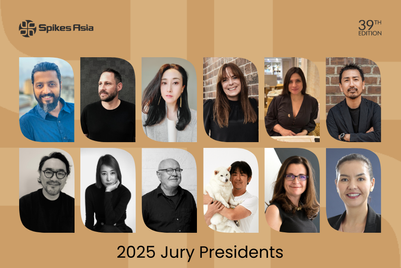
“Creativity is a way of doing things, rather than something tangible," Summers said in his Spikes Asia 2013 presentation kicking off the seminar programme this morning. "It's not always an object, output and result,” he added. “But can be a means of taking people from one point to another.”
According to a survey Anomaly did with 300 university students in China, 25 per cent of them think a majority of creativity comes from businesspeople, compared to only 3 per cent saying artists.
“To be creative, you don’t have to be in the creative industry,” Summers said. “Chinese people see creativity as a new way of doing things, instead of what comes from conventional creative people.”
Much of the best innovation in China today is built around developing creative business models in addition to, or instead of, new physical products. “Brands should look at the way consumers talk about the product, and build the business model around the product,” he said. “That’s where you get breakthrough.”
|
Citing five examples of creativity in business—Vancl (B2C online retailer), Xiaomi (Chinese smartphone maker), taxi applications, Jiayuan.com (Chinese online dating site) and Taobao (e-commerce)—Summers gave five suggestions about how brands should rethink what it means to be creative in China.
Brands need to identify the real problem as opposed to the "advertising problem" and start with the challenge, instead of the channel.
The sum of many small efforts will lead to success. Summers pointed out that a lot of creativity seen in China is in a startup model or an entrepreneur mindset. “Take simple consumer behaviours, such as chatting and messaging apps, to connect people in an intuitive way,” Summers said.
For example, when it comes to taxi-calling applications, China services tend to let the market set the price, taking an e-commerce mentality, and letting people bid for service. “It’s controversial, but highly disruptive,” he said. “It turns taxi searching into a gambling game, introducing a game element, which has created a [controversial] market economy driven by demand.”
Apply creativity not just in talking about business, but in the business model. Creativity needs to be linked to commercial consequence, and marketing is built into the product, rather than an afterthought or add-on.
He also suggested brands should build on, refine and improve what they have, rather than create something new.
Lastly, brands need to tap into the creative spirit of consumers and involve consumers in every step of the process. “Customisation is a way to make people feel the ownership of the brand,” Summers said. “To consumers, it’s a representation of themselves.”




.jpg&h=334&w=500&q=100&v=20250320&c=1)

.jpg&h=334&w=500&q=100&v=20250320&c=1)
.jpg&h=334&w=500&q=100&v=20250320&c=1)
.png&h=334&w=500&q=100&v=20250320&c=1)





.jpg&h=268&w=401&q=100&v=20250320&c=1)





.jpg&h=268&w=401&q=100&v=20250320&c=1)